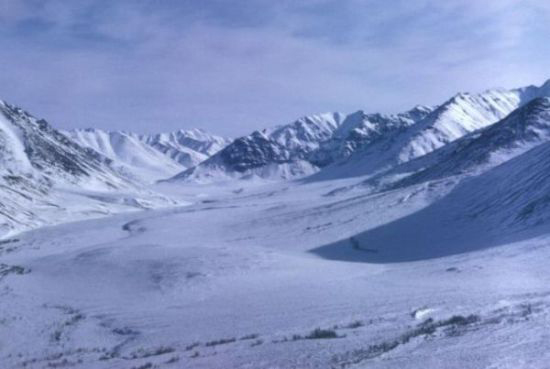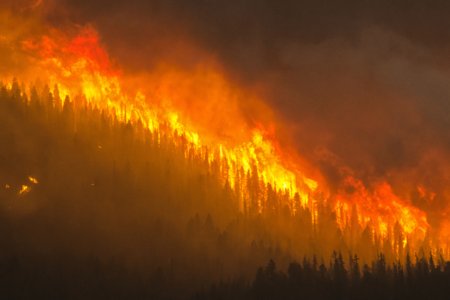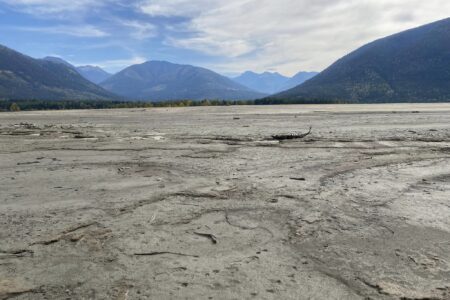Britain's richest man to build giant Arctic iron ore mine
By Terry Macalister, guardian.co.uk
Britain’s richest man is planning a giant new opencast mine 300 miles inside the Arctic Circle in a bid to extract a potential $23bn (£14bn) worth of iron ore.
The “mega-mine” – which includes a 150km railway line and two new ports – is believed to be the largest mineral extraction project in the Arctic and highlights the huge commercial potential of the far north as global warming makes industrial development in the region easier.
The billionaire steel magnate Lakshmi Mittal, who is behind the project, wants to exploit a commodity whose value has doubled due to soaring demand from China and India.
But the wildlife group WWF, describes the planned mine as a “game changer” and a test case that could affect all future industrialisation of the far north. “It is certainly … of a scale that would be massive anywhere in the world,” said Martin von Mirbach, a director of the Arctic programme at WWF in Canada. WWF is demanding the company proceeds with extreme caution.
Documents seen by the Guardian show that Mittal’s company, the world’s biggest steel-making group, ArcelorMittal, admits the operations will be undertaken in an area inhabited by unique wildlife including polar bear, narwhal and walrus.
The company has just spent nearly $600m (£373m) alongside a US private equity firm buying Baffinland Iron Mines, to seize control and develop the Mary river deposits in the Nunavut region of the Canadian Arctic.
Mittal has already outlined an ambitious plan to use more than 2,000 workers to build 24 bridges, stretches of road, warehouses, fuel depots, landfills and an airstrip as well as the docks at Milne Inlet and Steensby.
The railway alone will take four years to construct and will need its own roads and quarries for iron ore, which the company says is “an essential commodity for ongoing growth and development of our society” particularly the developing economies of China and India.
The project will also provide jobs for locals and increased revenues for the local government of Nunavut while contributing to “strengthening Canada’s sovereignty in the north”.
But an environmental impact statement prepared for Baffinland Iron Mines accepts the area is home to terrestrial mammals including caribou, Arctic fox and hare.
The statement outlines how marine mammals are also found in abundance in the region including polar bears, narwhals, beluga whales and blowhead whales while migratory birds include snow geese, rough-legged hawks and gyro-falcons.
The operators say they will work hard to prevent contamination from sewage, wastewater and explosive equipment-washing but they admit: “building sections of the railway into the edge of several lakes will be unavoidable … some fish habitat will be lost.”
It also says “accidental kills of caribou could occur as a result of project activity” and that “small numbers of ringed seal mortalities could occur as a result of icebreaking activity.”
The company admits any large diesel spill “would have significant environmental effects” but says this kind of event is unlikely. Baffinland also argues it will pay more than $2.8bn in taxes to the government of Nunavut over 21 years and that it will spend $1.7bn on labour.
A spokesperson for ArcellorMittal said that the project is currently in the environmental assessment process during which NGOs, governments and individuals are invited to review the plans.
“Included in the environmental impact statement (EIS) are detailed management, mitigation, and monitoring plans, which will allow for potential impacts to be minimised. All aspects of the project, through construction, operation and closure will be evaluated and will adhere to the conditions established for the project through this process,” the spokesperson said.
WWF says it is up to the local Inuit to decide whether the project goes ahead but the wildlife group wants to help ensure the plans are developed in the most sensitive way.
“This is a test case on the potential for carrying out large-scale industrial development in the Canadian Arctic in an appropriate way. We would like to see better information about a project whose scale would be massive wherever it was in the world,” said von Mirbach.
“The biggest impact will be from shipping with a ship every 32 hours, year-round. This might not be much off Norway but here with an average of between 0-10 ships a year, it’s significant. It is hard to know what impact it will have on narwals and walruses,” he added.
























Comments